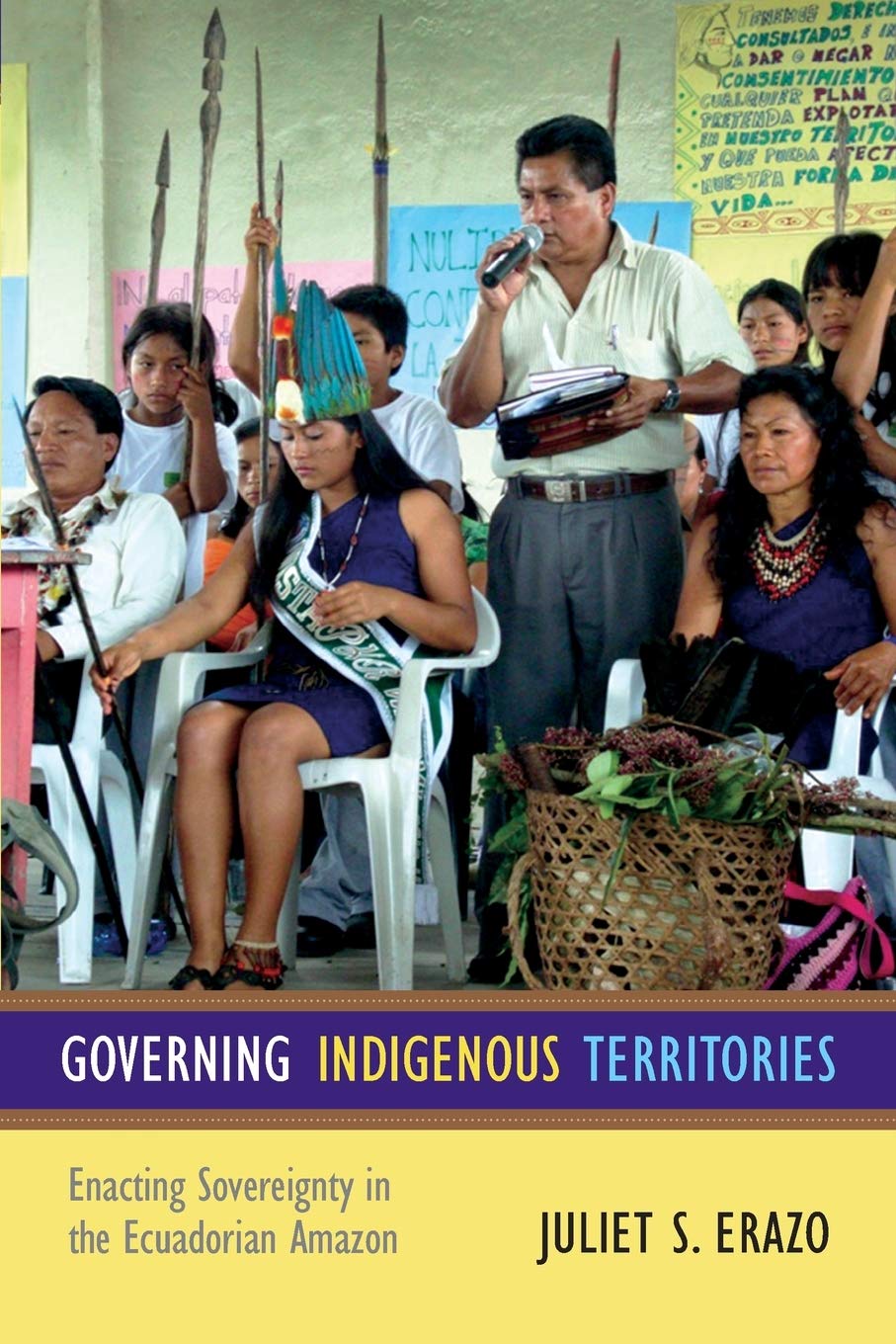
Title

Governing Indigenous Territories: Enacting Sovereignty in the Ecuadorian Amazon,New
Delivery time: 8-12 business days (International)
Governing Indigenous Territories illuminates a paradox of modern indigenous lives. In recent decades, native peoples from Alaska to Cameroon have sought and gained legal title to significant areas of land, not as individuals or families but as large, collective organizations. Obtaining these collective titles represents an enormous accomplishment; it also creates dramatic changes. Once an indigenous territory is legally established, other governments and organizations expect it to act as a unified political entity, making decisions on behalf of its population and managing those living within its borders. A territorial government must mediate between outsiders and a notalwaysunited population within a context of constantly shifting global development priorities. The people of Rukullakta, a large indigenous territory in Ecuador, have struggled to enact sovereignty since the late 1960s. Drawing broadly applicable lessons from their experiences of selfrule, Juliet S. Erazo shows how collective titling produces new expectations, obligations, and subjectivities within indigenous territories.
By changing our most important processes and
products, we have already made a big leap forward. This ranges from the
increased use of more sustainable fibers to the use of more
environmentally friendly printing processes to the development of
efficient waste management in our value chain.
⚠️ WARNING (California Proposition 65):
This product may contain chemicals known to the State of California to cause cancer, birth defects, or other reproductive harm.
For more information, please visit www.P65Warnings.ca.gov.
Shipping & Returns
Shipping
We ship your order within 2–3 business days for USA deliveries and 5–8 business days for international shipments. Once your package has been dispatched from our warehouse, you'll receive an email confirmation with a tracking number, allowing you to track the status of your delivery.
Returns
To facilitate a smooth return process, a Return Authorization (RA) Number is required for all returns. Returns without a valid RA number will be declined and may incur additional fees. You can request an RA number within 15 days of the original delivery date. For more details, please refer to our Return & Refund Policy page.
Shipping & Returns
Shipping
We ship your order within 2–3 business days for USA deliveries and 5–8 business days for international shipments. Once your package has been dispatched from our warehouse, you'll receive an email confirmation with a tracking number, allowing you to track the status of your delivery.
Returns
To facilitate a smooth return process, a Return Authorization (RA) Number is required for all returns. Returns without a valid RA number will be declined and may incur additional fees. You can request an RA number within 15 days of the original delivery date. For more details, please refer to our Return & Refund Policy page.
Warranty
We provide a 2-year limited warranty, from the date of purchase for all our products.
If you believe you have received a defective product, or are experiencing any problems with your product, please contact us.
This warranty strictly does not cover damages that arose from negligence, misuse, wear and tear, or not in accordance with product instructions (dropping the product, etc.).
Warranty
We provide a 2-year limited warranty, from the date of purchase for all our products.
If you believe you have received a defective product, or are experiencing any problems with your product, please contact us.
This warranty strictly does not cover damages that arose from negligence, misuse, wear and tear, or not in accordance with product instructions (dropping the product, etc.).
Secure Payment
Your payment information is processed securely. We do not store credit card details nor have access to your credit card information.
We accept payments with :
Visa, MasterCard, American Express, Paypal, Shopify Payments, Shop Pay and more.
Secure Payment
Your payment information is processed securely. We do not store credit card details nor have access to your credit card information.
We accept payments with :
Visa, MasterCard, American Express, Paypal, Shopify Payments, Shop Pay and more.
Related Products
You may also like
Frequently Asked Questions
- Q: What is the main focus of 'Governing Indigenous Territories'? A: The book highlights the complexities and paradoxes faced by indigenous peoples, particularly in the Ecuadorian Amazon, as they seek to enact sovereignty and manage their territories collectively.
- Q: Who is the author of this book? A: The author of 'Governing Indigenous Territories' is Juliet S. Erazo, who explores the experiences of indigenous communities in establishing self-governance.
- Q: What kind of insights does this book provide about indigenous governance? A: The book provides insights into how collective land title affects governance, expectations, and relationships within indigenous communities and with external entities.
- Q: How many pages does 'Governing Indigenous Territories' have? A: This book contains 264 pages.
- Q: What is the publication date of this book? A: The book was published on July 18, 2013.
- Q: What format is 'Governing Indigenous Territories' available in? A: The book is available in paperback format.
- Q: Is this book suitable for academic study? A: Yes, 'Governing Indigenous Territories' is suitable for academic study, particularly in fields related to indigenous rights, governance, and environmental studies.
- Q: Does this book discuss the challenges faced by indigenous territories? A: Yes, it discusses the challenges and changes that arise when an indigenous territory is legally recognized and the expectations placed on it.
- Q: What themes are explored in the book? A: Themes include sovereignty, collective action, the impact of legal recognition, and the dynamics of governance within indigenous communities.
- Q: Can this book help in understanding the legal context of indigenous land rights? A: Yes, it provides a comprehensive understanding of the legal context surrounding indigenous land rights and the implications for self-determination.
